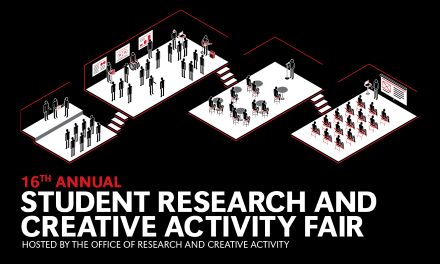Higher Complexity in Movements Indicates Better Sensorimotor Coordination
Presenter Type
UNO Graduate Student (Doctoral)
Major/Field of Study
Biomechanics
Author ORCID Identifier
0000-0003-3255-7252
Advisor Information
Assistant Professor
Location
CEC RM #201/205/209
Presentation Type
Poster
Poster Size
42" w x 32" h
Start Date
22-3-2024 9:00 AM
End Date
22-3-2024 10:15 AM
Abstract
Numerous studies spanning the last two decades have shown that healthy biological signals (e.g., heart rate, gait parameters, reaction times) exhibit a complex time series structure portraying statistical long-range correlations such that the size of movements (e.g., steps, arm swings) tend to be related over time. Those findings confer that movements exhibiting long-range correlations enhance coordination among physiological processes, leading to an optimal functional state. Synchronizing movements to an irregular metronome structured with long-range correlations restores complexity in pathological and older populations. Irregular metronomes also promote resilience to mechanical disturbances, suggesting that an optimal state of complexity may also enhance sensorimotor efficacy. We investigated whether training movements to exhibit a complex variability during a generalized task will improve sensorimotor coordination. 24 healthy adults performed a pre- and post- Sensorimotor Task (ST) as well as a training task. Subjects performed a pre-ST of tapping alternately between two rectangular target plates as quickly and accurately as possible. The amplitudes and widths of the targets were randomized with 16 different combinations, changing the index of difficulty of the task. Subjects were then randomly placed in one of three groups which dictated whether they received training and if so, what type of training they received. Subjects in Groups 1 and 2 underwent 4 sessions of training over 2 weeks following the pre-ST. During training, subjects were seated and performed wrist rotations in a chair with modified armrests that had attached manipulanda. Group 1 performed continuous wrist rotations synchronized to a variable metronome lasting 30 minutes. Group 2 performed wrist rotations at a self-selected pace with no metronome for 30 minutes. After the training sessions were completed, Groups 1 and 2 completed a post-ST. Group 3 only performed a pre- and post-ST with no training. We compared the subjects who underwent training that improved and who did not improve on the ST. A Bayesian paired samples t-test was used to compare the groups. The test indicated strong evidence of a difference in entropy during training between the improved and no-improvement groups (BF₁₀ = 4.373). The error percentage associated with this test was found to be minimal (2.276×10⁻⁵), further enhancing the reliability of the obtained results. This implies a significant increase in entropy movements for the group that improved on the ST compared to the group that did not improve. Therefore, greater inherent movement complexity may facilitate superior performance in sensorimotor tasks compared to lower complexity.
Higher Complexity in Movements Indicates Better Sensorimotor Coordination
CEC RM #201/205/209
Numerous studies spanning the last two decades have shown that healthy biological signals (e.g., heart rate, gait parameters, reaction times) exhibit a complex time series structure portraying statistical long-range correlations such that the size of movements (e.g., steps, arm swings) tend to be related over time. Those findings confer that movements exhibiting long-range correlations enhance coordination among physiological processes, leading to an optimal functional state. Synchronizing movements to an irregular metronome structured with long-range correlations restores complexity in pathological and older populations. Irregular metronomes also promote resilience to mechanical disturbances, suggesting that an optimal state of complexity may also enhance sensorimotor efficacy. We investigated whether training movements to exhibit a complex variability during a generalized task will improve sensorimotor coordination. 24 healthy adults performed a pre- and post- Sensorimotor Task (ST) as well as a training task. Subjects performed a pre-ST of tapping alternately between two rectangular target plates as quickly and accurately as possible. The amplitudes and widths of the targets were randomized with 16 different combinations, changing the index of difficulty of the task. Subjects were then randomly placed in one of three groups which dictated whether they received training and if so, what type of training they received. Subjects in Groups 1 and 2 underwent 4 sessions of training over 2 weeks following the pre-ST. During training, subjects were seated and performed wrist rotations in a chair with modified armrests that had attached manipulanda. Group 1 performed continuous wrist rotations synchronized to a variable metronome lasting 30 minutes. Group 2 performed wrist rotations at a self-selected pace with no metronome for 30 minutes. After the training sessions were completed, Groups 1 and 2 completed a post-ST. Group 3 only performed a pre- and post-ST with no training. We compared the subjects who underwent training that improved and who did not improve on the ST. A Bayesian paired samples t-test was used to compare the groups. The test indicated strong evidence of a difference in entropy during training between the improved and no-improvement groups (BF₁₀ = 4.373). The error percentage associated with this test was found to be minimal (2.276×10⁻⁵), further enhancing the reliability of the obtained results. This implies a significant increase in entropy movements for the group that improved on the ST compared to the group that did not improve. Therefore, greater inherent movement complexity may facilitate superior performance in sensorimotor tasks compared to lower complexity.

